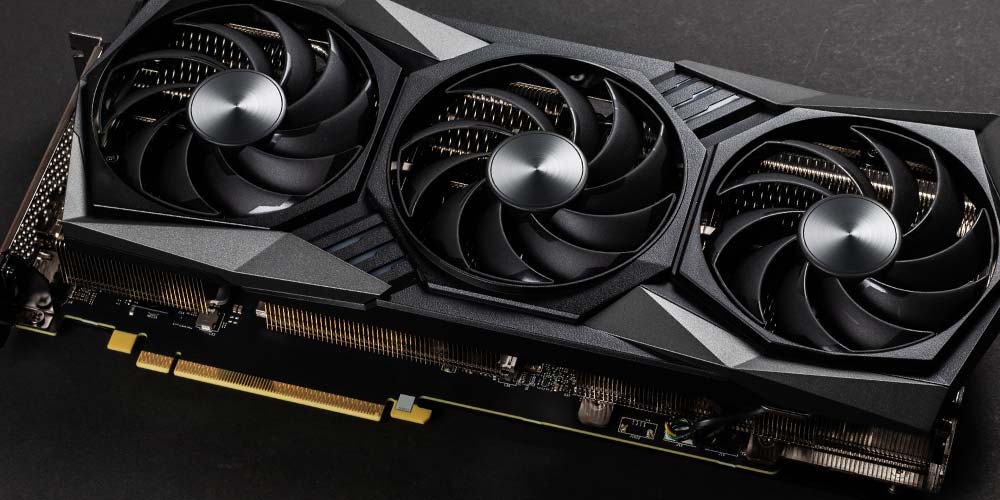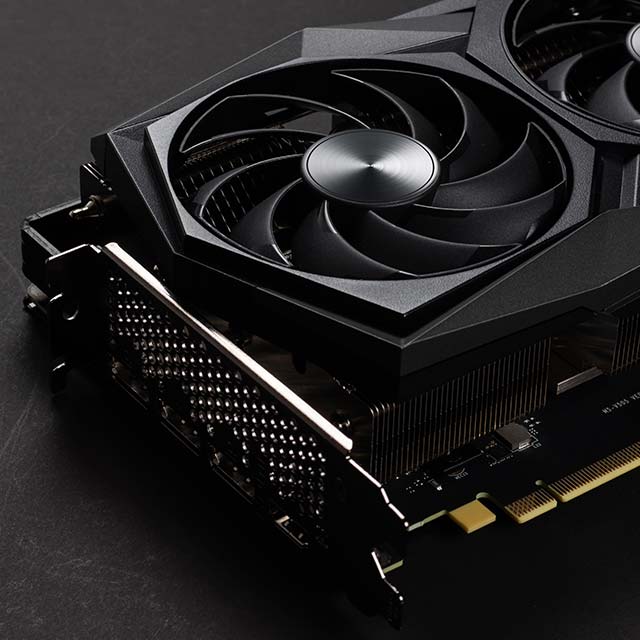GPU Power Supply: Optimizing Your GPU Performance

Author: FSP Group
Whether it's for the currently trending AI applications or meeting the demands of gamers and professional users, GPUs (Graphics Processing Units) play a crucial role in high-performance computing, graphics processing, and data analysis, becoming a core component of computer performance. When upgrading graphics cards or assembling new computers, beyond selecting suitable graphics cards, choosing a stable power supply unit for the graphics card is an essential factor that cannot be overlooked. This article will introduce the basic functions of various graphics card power supplies and enable readers to quickly grasp how to choose appropriate GPU power supplies for different needs and systems.
What is a GPU Power Supply?
With the increasing demand for high-end graphics cards driven by AI operations and popular gaming titles, high-end graphics cards require high-wattage and high-efficiency power supplies during operation. The GPU power supply unit can provide the necessary wattage and current for graphics card operation, ensuring system stability. As high-performance graphics cards demand increasingly higher power consumption, especially in gaming PCs, graphics workstations, and AI and data processing fields, choosing an efficient and stable GPU power supply is crucial. These power supplies not only directly affect graphics card performance but are also closely related to overall system stability. Therefore, selecting an appropriate GPU power supply will ensure optimal performance of both the graphics card and the overall computer system.
Functions of GPU Power Supply
GPU power supplies must provide stable voltage to prevent system instability or graphics card overheating due to insufficient power. When graphics cards operate under high load conditions, such as gaming, rendering, or AI computations, system load rapidly increases, and voltage fluctuations can lead to graphics card overheating, performance degradation, or even abnormal restarts. A stable power supply can maintain output voltage within precise ranges, resilient to sudden voltage fluctuations, ensuring continuous optimal graphics card performance. Additionally, stable power output helps extend graphics card lifespan and reduces the need for frequent maintenance and replacement.
FSP's power supply products comply with Intel ATX 3.1 specifications, offering high peak power capability and stability in terms of Power Offset and Transient Response. For power supplies below 450 watts without 12V-2x6, the power offset is 150%@100µs; for power supplies above 450 watts with 12V-2x6, the power offset is 200%@100µs.
Main Applications of GPU Power Supplies
Computer Gaming
For competitive gamers, GPU power supplies play a crucial role as game operation typically requires high-performance graphics cards for stable visual performance. Gaming graphics cards generally consume high power, usually requiring 300W to 600W or more, especially in multi-GPU configurations, where power supplies need sufficient wattage and stability. Furthermore, high-end gaming has stricter requirements for stable power output to prevent voltage fluctuations causing frame stuttering or system crashes, thus an appropriate power supply guarantees a more stable and immersive gaming experience.
Graphics Workstations
Graphics workstations often feature multiple high-end graphics cards to execute complex 3D rendering, video editing, and animation production tasks. These applications demand extremely high graphics card performance, requiring graphics workstation GPU power supplies to provide stable and sustained high-wattage power to prevent system interruptions during lengthy rendering tasks due to insufficient power. Moreover, multi-phase power design and overvoltage protection are particularly important in graphics workstations, effectively preventing sudden power anomalies from disrupting work processes.
AI and Data Processing
AI and data processing work demands GPU computing power that significantly exceeds the previous two categories, often utilizing multiple graphics cards simultaneously for extensive data analysis and machine learning model training. In such cases, GPU power supplies need to maintain stable power delivery capability under high loads for extended periods, with efficiency and heat dissipation being key to maintaining performance. High-power supplies with overvoltage and short-circuit protection can effectively prevent power fluctuations during operation, ensuring AI system stability and data accuracy, meeting the demands of long-term computation.
Graphics Card Power Requirements and Power Supply Correlation
Entry-Level Graphics Cards
Entry-level graphics cards have relatively low power consumption, generally between 100W and 200W. These graphics cards are mainly suitable for general daily use, such as web browsing, video playback, and basic image processing. Daily tasks have lower power requirements, so no additional power supply is needed, relying only on power from the motherboard's PCI-E slot. For systems with entry-level graphics cards, a power supply with basic stable output is sufficient, and high-wattage power devices are not necessary.
Mid-Range Graphics Cards
Mid-range graphics cards typically consume between 200W and 300W, such as the NVIDIA RTX 5060 or AMD Radeon RX 9060 XT. These graphics cards are usually used for medium to high-quality gaming experiences and basic image processing needs. Due to their relatively high wattage consumption, they usually require additional 6-pin or 8-pin power connectors to ensure sufficient current delivery. With the development of graphics card technology, mid-range cards are gradually transitioning to 12V-2x6 (16-pin) connectors. Therefore, when choosing a graphics card power supply, it is recommended to consider models with 12V-2x6 support, which not only improves stability but also facilitates future upgrades and provides more efficient power delivery.
High-End Graphics Cards
High-end graphics cards like the NVIDIA GeForce RTX 5090 or AMD Radeon RX 9070 XT or RTX PRO 6000 Blackwell can consume over 600W or even higher, especially when using multiple cards or in extreme performance settings. These graphics cards are mainly used for highest quality gaming experiences, complex 3D rendering, and AI model training, with extremely high wattage requirements. High-end graphics card power supplies need to provide stable high-power output, usually requiring multi-phase power design to improve stability, and equipped with overvoltage and short-circuit protection features to ensure safe operation of the graphics card and system while maintaining optimal performance. For high-end graphics card configurations, it is strongly recommended to choose power supplies of 1000W or above to meet the high wattage requirements and ensure power stability.
FAQs About Graphics Card Power Supplies
Do I need to replace the power supply when upgrading my PC?
Not necessarily, but upgraded PC components often demand higher power wattage. If the existing power supply cannot meet the system's power requirements, it may lead to system instability. When the total power consumption of your upgraded system exceeds the capacity of the existing power supply, it is recommended to upgrade to a power supply with an appropriate wattage that can support your new components.
How to choose the right wattage for a power supply?
Choose a power supply with the appropriate wattage for your system. Too high wattage can increase costs and waste energy. Power supplies typically achieve maximum efficiency in the 40%-80% load range. A supply with excessive wattage may lead to frequent low-load operations, reducing power efficiency and increasing energy and operational costs. Here’s how to evaluate power supply wattage:
- Determine the maximum power demand: Calculate the power consumption of each component and find the total.
- Reserve adequate power margin: Consider future upgrades.
- Check the power supply efficiency rating.
- Confirm the output needs and environmental conditions.
FSP’s Graphics Card Power Supply Products for AI and High-Power Applications
FSP introduces power supplies for AI, edge computing, medical applications, and industrial fields. At Electronica 2024 in Munich, they showcased high-performance ATX 3.0/3.1 power supplies, including the FSP2500-57APB (2500W). This product, adhering to ATX 3.1 standards with 80 Plus 230V EU Platinum efficiency, supports four 12V-2x6 ports, ideal for high-performance computing. Key specs include:
- Intel PSDG ATX 12V V3.1 compliant
- PCIe Gen5 ready with four PCIe Gen5 (12V-2x6) connectors
- 80 Plus 230V EU Platinum efficiency
- Input voltage: 200Vac-240Vac
- Single +12V rail to meet system demands
- Active PFC for up to 0.99 power factor correction
- 13.5cm fan for ultra-quiet operation
- Certified by CB 62368, TUV, UL, EMC, CE, FCC, etc.
Other products like FSP1650-57ALB (1650W), FSP1350-57ALB (1350W), and FSP1000-57AGC (1000W) also comply with PCIe Gen5 and are equipped with 12VHPWR/12V-2x6 connectors, suitable for demanding AI and edge computing environments.
Key Features of FSP1650-57ALB (1650W):
- Intel PSDG ATX 12V V3.1 compliant
- PCIe Gen5 ready with two PCIe Gen5 (12V-2x6) connectors
- 80 Plus Titanium efficiency
- Supports international voltage: 110-240Vac
- Single +12V rail to meet system demands
- Active PFC for up to 0.99 power factor correction
- 13.5cm fan for ultra-quiet operation
- Certified by CB 62368, TUV, UL, EMC, CE, FCC, etc.
Key Features of FSP1350-57ALB (1350W):
- Intel PSDG ATX 12V V3.1 compliant
- PCIe Gen5 ready with two PCIe Gen5 (12V-2x6) connectors
- 80 Plus Titanium efficiency
- Supports international voltage: 100-240Vac
- Single +12V rail to meet system demands
- Active PFC for up to 0.99 power factor correction
- 13.5cm fan for ultra-quiet operation
- Certified by CB 62368, TUV, UL, EMC, CE, FCC, etc.
Details Differentiation Table as Below:
|
Product |
|||
|
Output Power |
2500W |
1650W |
1350W |
|
Input Voltage |
200Vac-240Vac |
110Vac-240Vac |
100Vac-240Vac |
|
Input Frequency |
50-60Hz |
50-60Hz |
50-60Hz |
|
Input Current |
230 Vac @ 15A |
115 Vac @ 15A, 230 Vac @ 10A |
115 Vac @ 15A, 230 Vac @ 8A |
FSP's next-generation PC power supplies provide enhanced power management capabilities, comply with ATX 3.1 specifications, and feature 12-2x6 connectors. Mechanical optimizations have been made to the PCB connection points to ensure pin alignment during insertion for improved safety. This enhances system stability, ensures optimal power delivery to each component, boosts overall efficiency, and extends hardware lifespan.
Features of 1000W, 850W, and 750W Modular Gold Efficiency Products
All three models share the following specifications, with differentiation in power and current capacity:
- Intel ATX 12V V3.0 compliant
- 12V-2X6 connector standard
- 80 Plus Gold efficiency certification
- Supports international voltage: 100-240Vac
- Single +12V rail to meet various system demands
- Active PFC for up to 0.99 power factor correction
- 12cm fan for ultra-quiet operation
Details Differentiation Table as Below:
|
Product |
|||
|
Output Power |
1000W |
850W |
750W |
|
Input Voltage |
100Vac-240Vac |
100Vac-240Vac |
100Vac-240Vac |
|
Input Frequency |
50-60Hz |
50-60Hz |
50-60Hz |
|
Input Current |
115 Vac @ 12A, 230 Vac @ 6A |
115 Vac @ 11A, 230 Vac @ 5.5A |
115 Vac @ 10A, 230 Vac @ 5A |
850W, 750W, 650W, and 550W Non-Modular Gold Efficiency Products
All four models share the following specifications, with differentiation in power and current capacity:
- Intel PSDG ATX 12V V3.1 compliant
- 80 Plus Gold efficiency certification
- Supports international voltage: 100-240Vac
- Single +12V rail to meet various system demands
- Active PFC for up to 0.99 power factor correction
- 12cm fan for ultra-quiet operation
- Certified by CB 62368, TUV, UL, EMC, CE, FCC, etc.
Details Differentiation Table as Below:
|
Product |
||||
|
Output Power |
850W |
750W |
650W |
550W |
|
Input Voltage |
100Vac-240Vac |
100Vac-240Vac |
100-240Vac |
100Vac-240Vac |
|
Input Frequency |
50-60Hz |
50-60Hz |
50-60Hz |
50-60Hz |
|
Input Current |
115Vac @ 10.5A, 230Vac @ 5A |
115Vac @ 9.5A, 230Vac @ 4A |
115Vac @ 8A, |
115Vac @ 7A, |
Conclusion
The GPU power supply unit is a core component that affects the stability of the GPU and the overall performance of the computer. This article has introduced the key functions and application scenarios of GPU power supplies. For users who require high performance, choosing the right GPU power supply will ensure optimal computer performance. Readers with GPU power supply needs can visit FSP's official website to explore products, and industry professionals with business inquiries can contact FSP for more solutions and product information.
FSP GPU Power Supply Product Information Website
About FSP
FSP Group is one of the global leading power supply manufacturer. Since 1993, FSP Group has followed the management conception “service, profession, and innovation” to fulfill its responsibilities as a green energy resolution supplier.



